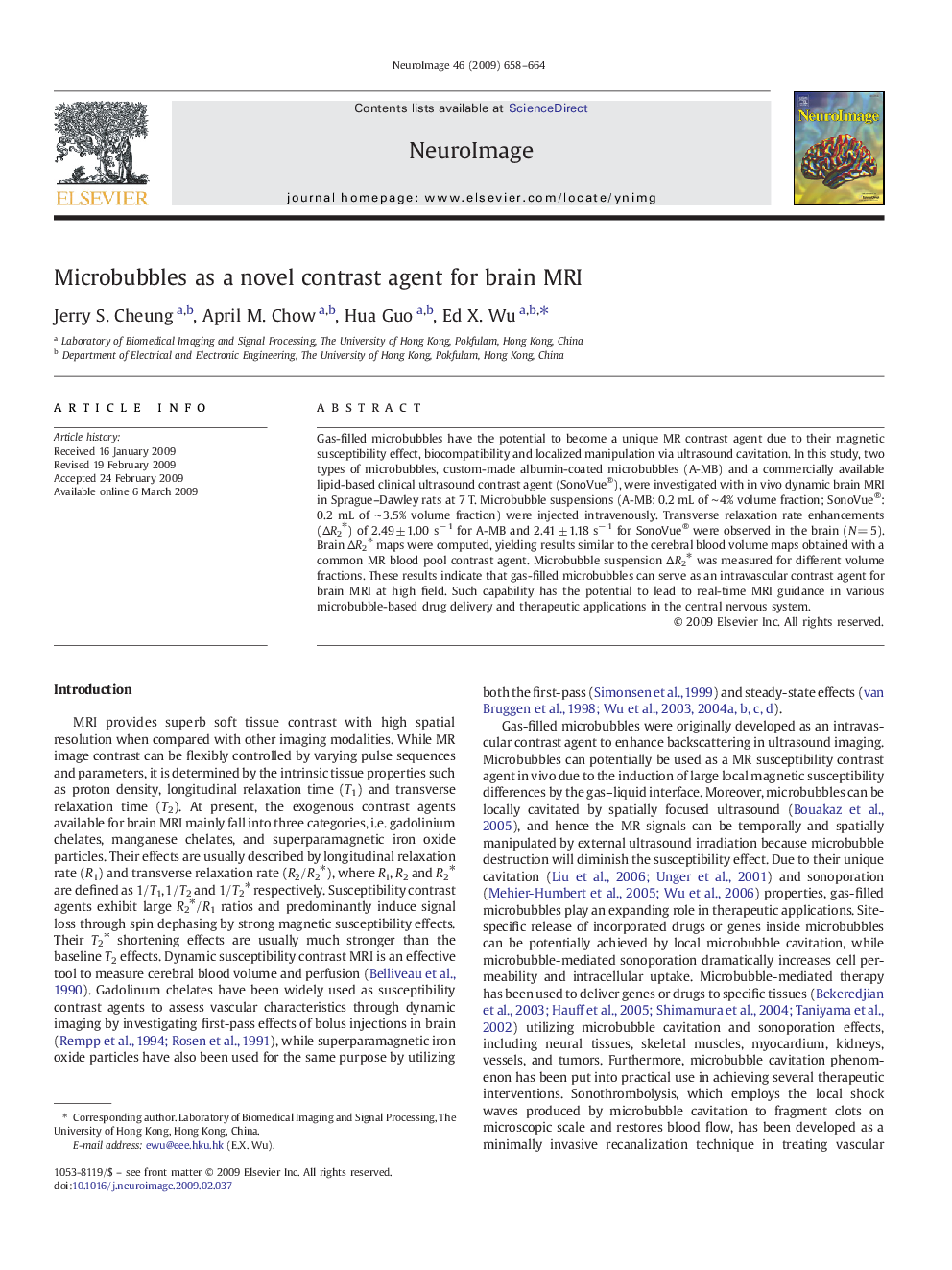| Article ID | Journal | Published Year | Pages | File Type |
|---|---|---|---|---|
| 6037852 | NeuroImage | 2009 | 7 Pages |
Abstract
Gas-filled microbubbles have the potential to become a unique MR contrast agent due to their magnetic susceptibility effect, biocompatibility and localized manipulation via ultrasound cavitation. In this study, two types of microbubbles, custom-made albumin-coated microbubbles (A-MB) and a commercially available lipid-based clinical ultrasound contrast agent (SonoVue®), were investigated with in vivo dynamic brain MRI in Sprague-Dawley rats at 7 T. Microbubble suspensions (A-MB: 0.2 mL of â¼Â 4% volume fraction; SonoVue®: 0.2 mL of â¼Â 3.5% volume fraction) were injected intravenously. Transverse relaxation rate enhancements (ÎR2â) of 2.49 ± 1.00 sâ 1 for A-MB and 2.41 ± 1.18 sâ 1 for SonoVue® were observed in the brain (N = 5). Brain ÎR2â maps were computed, yielding results similar to the cerebral blood volume maps obtained with a common MR blood pool contrast agent. Microbubble suspension ÎR2â was measured for different volume fractions. These results indicate that gas-filled microbubbles can serve as an intravascular contrast agent for brain MRI at high field. Such capability has the potential to lead to real-time MRI guidance in various microbubble-based drug delivery and therapeutic applications in the central nervous system.
Related Topics
Life Sciences
Neuroscience
Cognitive Neuroscience
Authors
Jerry S. Cheung, April M. Chow, Hua Guo, Ed X. Wu,
